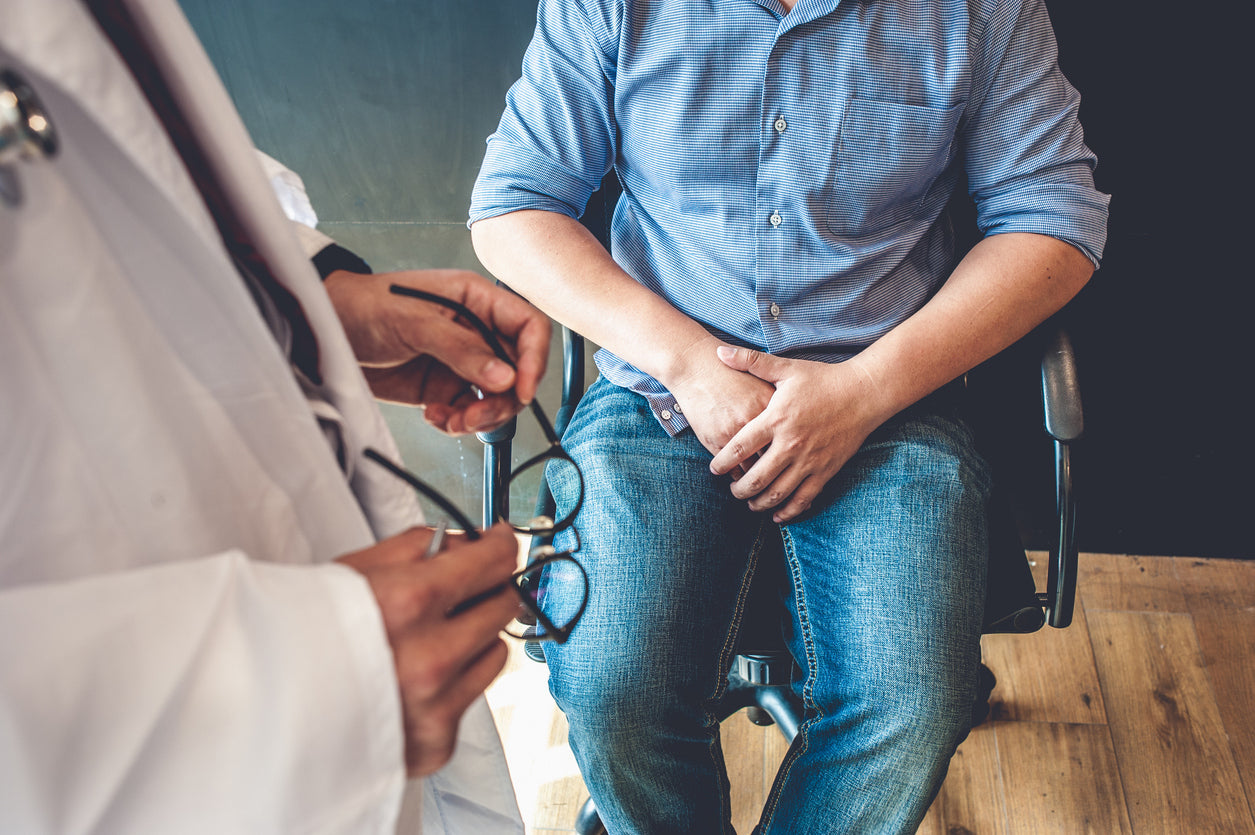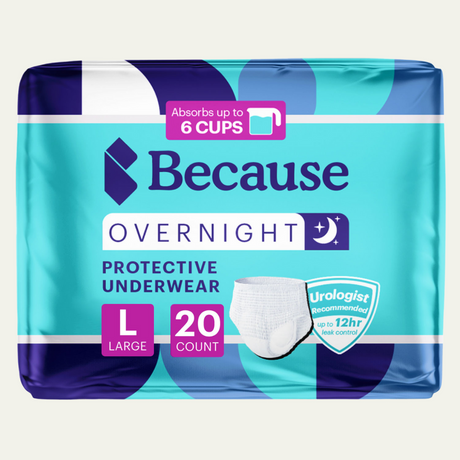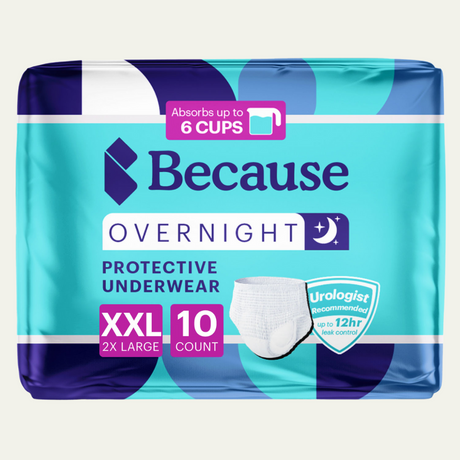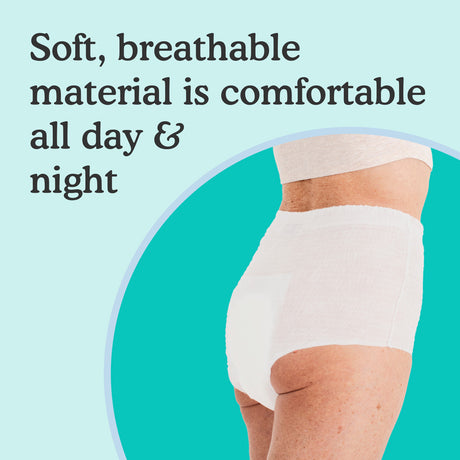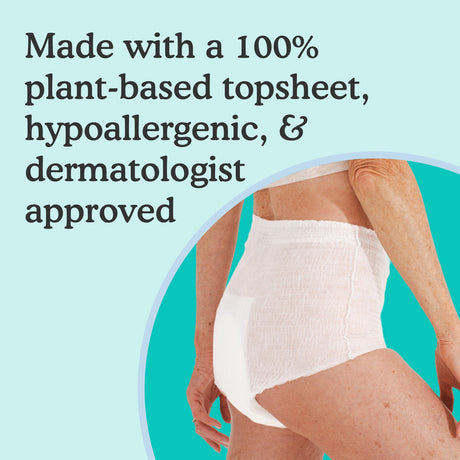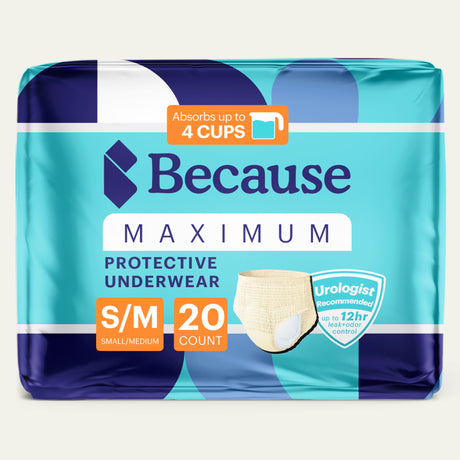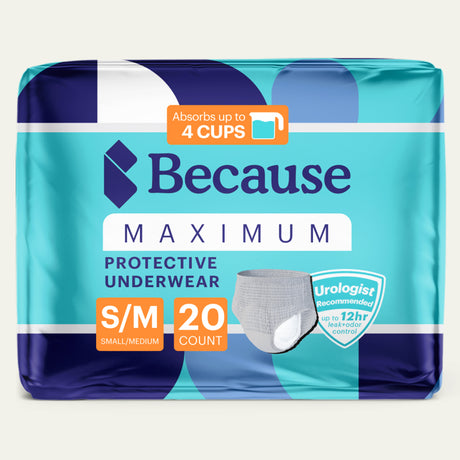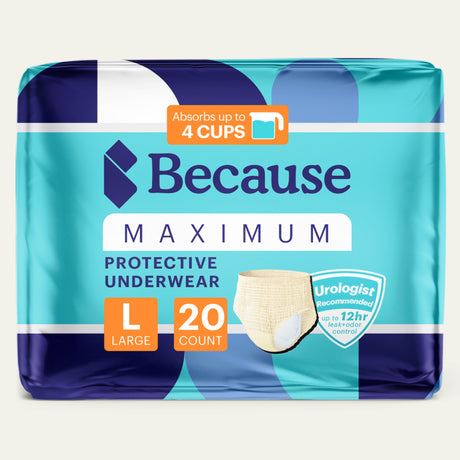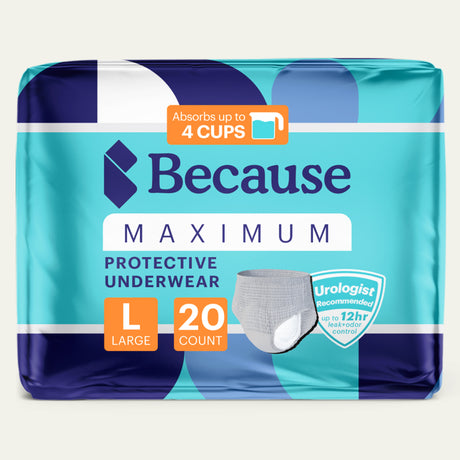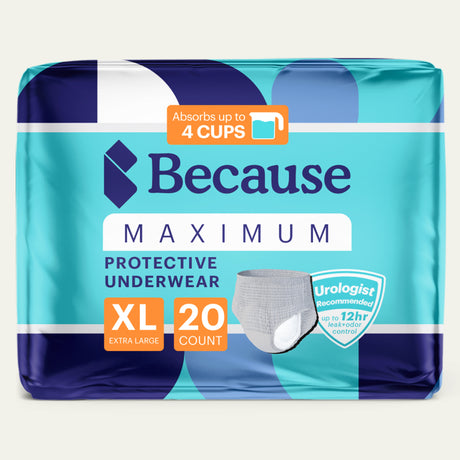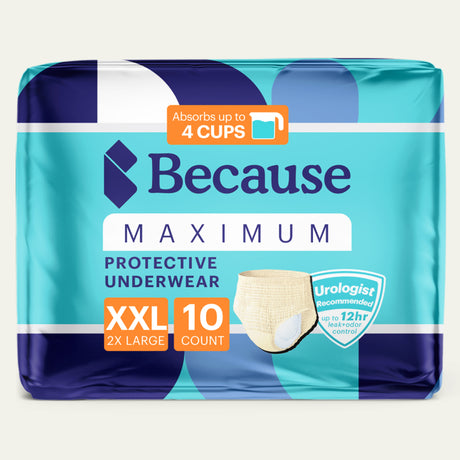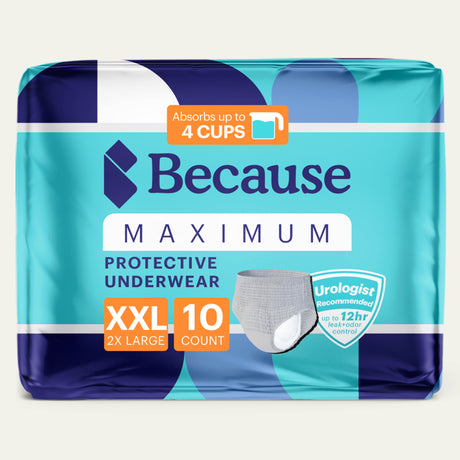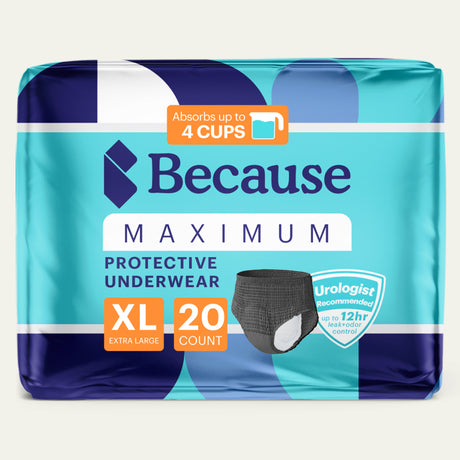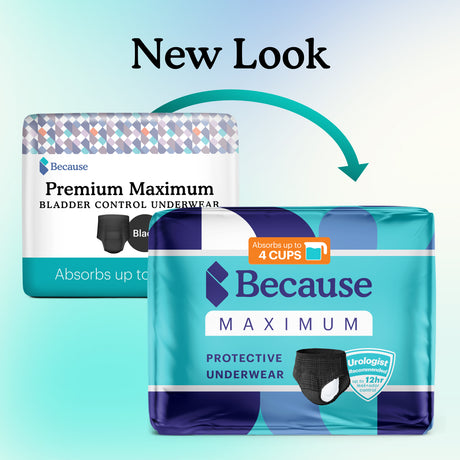Managing urinary incontinence is a typical challenge for older adults. Around a third of adults 65 and over experience urinary incontinence, and addressing these bladder issue symptoms—including those caused by prostate surgery—can be an achievable goal for many.
After skin cancer, prostate cancer is the most common type of cancer in men. Often, doctors recommend prostate surgery as a part of treatment for the disease. While surgery is often effective, side effects, like urinary incontinence, are possible after it. The good news is there are treatment options available to address urinary incontinence after prostate surgery.

What to Expect After Prostate Surgery
Knowing what can happen after prostate surgery can help you prepare for the procedure. Normally, you’ll be in the hospital for a day or two afterwards. Most surgeries happen under general anesthesia, so you’ll likely feel disoriented and groggy once you wake up. In the hospital, your care team will monitor you closely for any severe side effects, usually asking you to walk on your own before they discharge you.
Doctors often allow patients to return home the next day while advising them to rest and avoid lifting heavy objects or exercising. Whether you undergo robotic surgery, an open prostatectomy, or a simple prostatectomy, you’ll need to return to your normal activities gradually.
You’ll likely need to wear a thin tube in your urethra (a urinary catheter) to help urine drain from your body for the first seven to ten days. At first, you may also have an incision to care for at home, and pain medication may help ease discomfort during the days immediately after surgery.
Although recovery time varies, most men resume their daily activities within four to six weeks following prostate removal or a simple prostatectomy. However, some side effects from the surgery (including urinary incontinence) may persist beyond that time.
Erectile dysfunction is another potential problem you may experience. In some men, erection problems continue for up to 18 months. Even when sexual function returns to normal, you’ll likely produce little to no semen during an orgasm. You should still be able to experience sexual pleasure despite the changes in ejaculation.
If you’re receiving treatment for cancer of the prostate, you may receive radiation therapy, hormone therapy, chemotherapy, and other interventions in the months after your procedure. Regardless of the surgical method used and the reason for surgery, you can expect to see your doctor several times for follow-up appointments throughout the next year.

Is Urinary Incontinence Common After Prostate Surgery?
Urinary incontinence occurs in some men after prostate surgery. Around 6 to 8% of men who undergo a radical prostatectomy (the complete removal of the prostate) develop urinary incontinence. Even those who keep part of the organ may still experience urine leakage after surgery.
Why Does Incontinence Occur After Prostate Surgery?
Why incontinence occurs after prostate surgery depends mainly on the type of surgery performed. If you have your entire prostate gland removed, your surgeon will need to remove one of the two valve-like muscles (called sphincters) that control the urine flow out of your bladder. Usually, having just one of these valves is enough for adequate bladder control, but it can take time for your body to adjust.
If you keep some of your prostate after surgical treatment, the effects of the procedure can cause incontinence. Nerves that control the bladder muscles may become severed, or the surrounding tissue could become inflamed — leading to nerve dysfunction. The surgery could also weaken pelvic floor muscles that support the bladder, leading to urine leakage.
What Types of Incontinence Occur After Prostate Surgery?
Three main types of urinary incontinence can occur during the recovery period after prostate surgery. Let’s take a look at each of them.
Stress Incontinence
Stress incontinence is the most common type of urinary incontinence in both men and women, most often after prostate surgical procedures. With this type of incontinence, the pelvic floor muscles cannot fully support the bladder. As a result, urine may escape when you cough, sneeze, laugh, or exercise vigorously. Although large amounts of urine may leak, you usually don’t experience a complete loss of bladder control with stress incontinence.
Overflow Incontinence
Overflow incontinence happens when you cannot urinate, even when you have the urge to go. When this happens, the bladder fills with urine until it can’t hold any more. At this point, the pressure buildup in the bladder forces urine out through the urethra, leading to leakage or dribbling.
Urge Incontinence
Urge incontinence is when you get a severe, urgent need to urinate. The problem often happens suddenly, and making it to the bathroom in time may be challenging. Most often, urge incontinence occurs due to nerve damage. Nerve-sparing surgical procedures can lower the likelihood of urge incontinence, but this surgery isn’t an option for all men.
How Long Does Incontinence Last After Prostate Surgery?
In otherwise healthy men, urinary incontinence may persist for six months to one year following prostate surgery. In rare cases, urinary incontinence may continue for longer. There’s a slight risk that urinary issues may become a long-term side effect of surgery that you must manage for years. How long you can expect to experience symptoms depends on your overall health, the type of surgery you received, and whether you seek treatment.
Does Incontinence Go Away On Its Own After Prostate Surgery?
Urinary incontinence eventually disappears after prostate cancer surgery for many patients, but it’s best not to ignore the problem. Talking to your doctor about incontinence at a follow-up visit is important because your healthcare provider can tell you about treatment options that could ease symptoms faster.
How Can I Improve Incontinence After Prostate Surgery?
There are many treatment options for incontinence after prostate surgery. Which type is right for you will depend on the type of incontinence, the severity of your symptoms, your general health, and the type of surgery your healthcare provider performed. Read on to explore some potential treatments.
Physical Therapy
You can build up strength in the pelvic floor muscles through physical therapy to ease incontinence symptoms. A physical therapist may teach you how to perform Kegel exercises targeting these muscles.
Performing Kegel exercises daily at home can enhance the effectiveness of physical therapy. If you don’t see a therapist, your doctor may give instructions to you. Exercises are the first treatment for incontinence after prostate surgery. If problems persist, they may recommend additional treatments until you get results.
Bulkamid
Bulkamid is an injection given into the walls of the urethra. A mix of water and polymers, the solution increases the mass of the muscles of the urethra wall. For many people, this strengthens the urethra while reducing urine leakage associated with stress incontinence.
Sacral Nerve Stimulation
Sacral nerve stimulation involves stimulating the nerves in the lower abdomen with a mild electric current to reduce symptoms of urge incontinence. To receive the treatment, you’ll need to undergo an outpatient medical procedure to implant a device in your lower back that will automatically deliver current.
Botox
Injections of botulinum toxin or Botox into the bladder may ease symptoms of urge incontinence, leading to an earlier return of complete bladder control. The injections reduce bladder muscle spasms to address urinary urgency, and you can typically receive the injections right in a doctor’s office. Most people can return to their usual activities immediately after the treatment — an easy, minimally invasive solution for urge incontinence.
Medication
In some cases, doctors may prescribe medications for incontinence. Anticholinergic drugs like oxybutynin interfere with brain chemicals triggering bladder contractions with urge incontinence. For overflow incontinence, your healthcare provider might recommend mirabegron, imipramine, or duloxetine. These drugs relax the bladder muscles to help empty urine.
As with all medications, there are some risks for side effects associated with these drugs. You and your healthcare provider will weigh the potential side effects against the possible benefits.
Urethral Sling
If mild to moderate stress incontinence persists despite other treatments, your doctor may recommend the urethral sling procedure — which involves wrapping part of the urethra with mesh. The surgery is minimally invasive and requires only a tiny incision between the scrotum and anus. Once in place, the sling supports the urethra and bladder to reduce urine leakage.
Artificial Urinary Sphincter
For moderate to severe stress incontinence following prostate surgery, an artificial urinary sphincter (AUS) may help. This cuff-like device is implanted around the urethra and attaches to a pump that goes into the scrotum. Then a balloon is placed in the abdomen to help you urinate. Once the system is in place, you will push on the pump to initiate the urine flow. Once your bladder has drained completely, the cuff closes independently and forms a tight seal to prevent urine leakage.
Tips to Manage Urinary Incontinence After Prostate Surgery
Whether your doctor thinks it’s a good idea for you to try Kegel exercises for a few months or recommends another intervention for urinary incontinence after prostate surgery, you can do a few things to manage your symptoms. Here are some tips for dealing with post-surgical incontinence:
- Use men’s incontinence protection: You can wear incontinence protection underwear or bladder protection guards in your underwear or switch to men's protection underwear that absorbs urine to stay dry when leaks or total loss of bladder control happens.
- Watch out for bladder irritants: Some foods and drinks like caffeine, alcohol, spicy foods, and acidic foods can irritate the bladder muscle, worsening incontinence symptoms.
- Practice incontinence skin care: When you experience urine leakage, change your bladder protection immediately. Cleanse with a spray or wipes to control odors and keep your penis and the skin in your private area clean.
- Follow your doctor’s advice: Stick to the treatment plan your healthcare provider recommends, whether it’s daily exercise or taking medication.
Does your loved one struggle with incontinence? Take our bladder protection quiz and get a sample pack to try.
If you're struggling with incontinence, join our private support group today!
Men's Incontinence Support Group
Sources:
American Journal of Nursing. (2020). Urinary Incontinence in Older Adults. https://journals.lww.com/ajnonline/fulltext/2020/01000/urinary_incontinence_in_older_adults.25.aspx
American Cancer Society. (n.d.). Key Statistics for Prostate Cancer. https://www.cancer.org/cancer/prostate-cancer/about/key-statistics.html
Mayo Clinic. (n.d.). Prostatectomy. https://www.mayoclinic.org/tests-procedures/prostatectomy/about/pac-20385198
Cleveland Clinic. (n.d.). Urinary Incontinence After Prostate Cancer Surgery. https://my.clevelandclinic.org/health/treatments/8096-prostate-cancer-urinary-incontinence-after-surgery
National Association for Continence (NAFC). (n.d.). Urinary Incontinence After Prostate Surgery: Everything You Need to Know. https://nafc.org/bhealth-blog/urinary-incontinence-after-prostate-surgery-everything-you-need-to-know/
